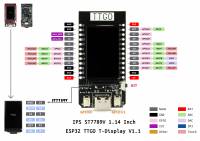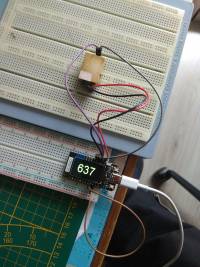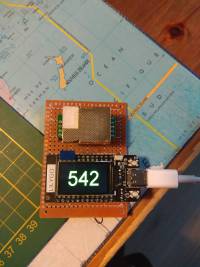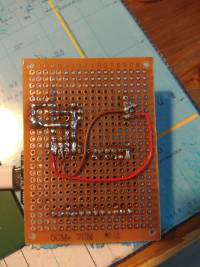Table of Contents
Operame
Project information
Goals
- Document it in English
- Maybe extend it in some way (automatic ventilation system?)
Hardware
- LILYGO® TTGO T-Display,
16MB CH340K Chipvariant - Winsen MH-Z19C NDIR CO2 Sensor,
400-2000ppm-Pin Ver.variant, difficulty was to buy a genuine version as mentioned on the Hardware page, the tip is to buy from Winsen official store even if costlier - through-hole female header pins (bought years ago, look around for cheaper options)
- perfboard (bought years ago, look around for cheaper options)
- solid core wire (left overs from other projects)
As I won't order PCBs online (and specific SMD sockets as shown in soldering instructions video) and just use what I have at hand, it will be assembled on a perfboard I had in my drawer for years.
Pinout:
TTGO T-Display MH-Z19C 5V VCC GND GND D26 RX D27 TX
D12 on the TTGO has to be grounded but it's not obvious why
Software
https://github.com/revspace/operame unmodified, had to install vscode (vscodium doesn't have platformio in its openvsx store) and the appropriate driver on Windows so platformio could flash the TTGO T-Display onboard ESP32
In action
Log
2021-11-14
Initial proof of concept with breadboard, everything works perfectly.
Then perfboard implementation. A first for me, quite the hassle, I probably didn't go the easiest way with the solder traces and then the cables on the back. A multimeter with continuity mode is a must have to ensure there's no short between traces.
Next time, solder traces are not worth the time and headache and cables should just be soldered through holes with a single solder joint to the next hole.
Planned
- maybe build another one for the hackerspace, but not convinced at all seeing the general attitude of just being maskless in a basement
- automatic ventilation system at Fuz? (PID controller, "industry-level library" according to some dude on the Internet), bang-bang)
- statistics?



